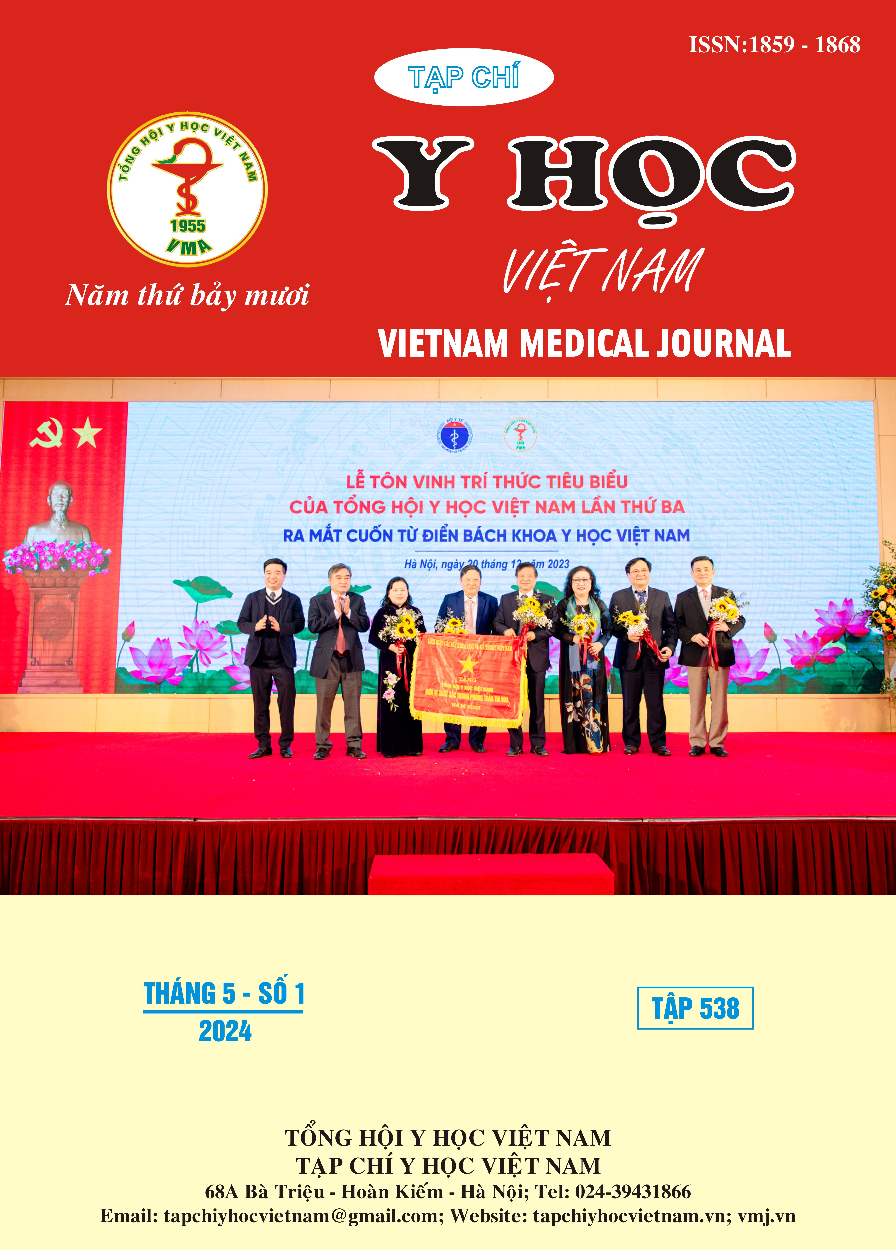NGHIÊN CỨU MỐI LIÊN QUAN GIỮA LÂM SÀNG, CẬN LÂM SÀNG VỚI CHỈ SỐ FIBROSCAN TRONG CHẨN ĐOÁN XƠ HÓA GAN Ở BỆNH NHÂN ĐẾN KHÁM VÀ ĐIỀU TRỊ TẠI BỆNH VIỆN 199
Nội dung chính của bài viết
Tóm tắt
Mục tiêu: Mô tả đặc điểm lâm sàng, cận lâm sàng và chỉ số Fibroscan trên đối tượng nghiên cứu. Đánh giá mối liên quan giữa triệu chứng lâm sàng, cận lâm sàng với chỉ số Fibroscan trên bệnh nhân xơ hóa gan. Phương pháp nghiên cứu: mô tả cắt ngang có phân tích. Kết quả: Tỷ lệ có xơ hóa gan 75,4% trường hợp. Trong đó tỷ lệ có xơ hóa đa số ở giai đoạn F2 (xơ hóa vừa) chiếm 50,2%, xơ hóa nhẹ (F1) là 15,5%, xơ hóa nặng (F3) là 6,6% và chỉ có 3,0% ở giai đoạn xơ gan (F4). Người cao tuổi có tỷ lệ xơ hóa gan cao, tăng dần theo tuổi, giới tính nam, thói quen sử dụng rượu bia, rối loạn chuyển hóa lipid. Thói quen sử dụng rượu bia làm tăng nguy cơ xơ hóa gan (OR=11,56). Rối loạn lipid máu làm tăng nguy cơ xơ hóa gan (OR=5,587), Viêm gan virus B mạn tính làm tăng nguy cơ xơ hóa gan (OR=5,587), viêm gan virus (OR=5,587). Kết luận: Rất ít trường hợp có triệu chứng lâm sàng. Có 10,8% bệnh nhân có biểu hiện chán ăn, 8,4% có biểu hiện đau tức hạ sườn phải và 31,1% bệnh nhân có tăng AST. Có 29,3% bệnh nhân tăng ALT. Tỷ lệ có xơ hóa đa số ở giai đoạn F2 (xơ hóa vừa ) chiếm 50,2%, xơ hóa nhẹ (F1) là 15,5%, xơ hóa nặng (F3) là 6,6% và chỉ có 3,0% ở giai đoạn xơ gan (F4). Rối loạn lipid máu làm tăng nguy cơ xơ hóa gan (OR=5,587), Viêm gan virus B mạn tính làm tăng nguy cơ xơ hóa gan (OR=5,587), viêm gan virus (OR =5,587).
Chi tiết bài viết
Từ khóa
Xơ hóa gan, đo độ đàn hồi gan.
Tài liệu tham khảo
2. Phan Thanh H. Siêu âm định lượng xơ gan (fibroscan). Tạp chí Thời sự Y học. 2006;12:41-2.
3. Shi X, Liu J, Pu X, Huang C, Ma X, Jin Y. Clinical study on the evaluation of liver fibrosis by ultrasound elastography combined with platelet count model. Clinical hemorheology and microcirculation. 2023;84(2):205-14.
4. Lư Quốc H. Nghiên cứu đặc điểm lâm sàng, cận lâm sàng và ý nghĩa của Fibroscan, Fibrotest trong chẩn đoán xơ hóa gan ở bệnh nhân viêm gan B, C mạn tính [Luận án Tiến sỹ Y học]. Hà Nội: Học viện Quân Y; 2018.
5. Kim Thanh H, Phạm Thị T. Tỷ lệ xơ hóa gan và một số yếu tố liên quan ở sĩ quan cao cấp đến khám tại Bệnh viện Quân y 121 năm 2021-2022. Tạp chí Y Dược học Cần Thơ. 05/2022;47:128-34.
6. Al Danaf L, Hussein Kamareddine M, Fayad E, Hussain A, Farhat S. Correlation between Fibroscan and laboratory tests in non-alcoholic fatty liver disease/non-alcoholic steatohepatitis patients for assessing liver fibrosis. World journal of hepatology. 2022;14(4):744-53.
7. Phạm Cẩm P, Võ Thị Thúy Q, Phạm Văn T, Lê Viết N, Đoàn Thu T, Nguyễn Văn D, cộng sự. Mô tả một số đặc điểm lâm sàng và cận lâm sàng ở bệnh nhân xơ gan. Tạp chí Y học Việt Nam. 2021;508(1):204-8.
8. Nguyễn Thị H. Đánh giá đặc điểm lâm sàng, cận lâm sàng và tỷ lệ gan nhiễm mỡ trên bệnh nhân có hội chứng chuyển hóa bằng máy Fibroscan touch tại Bệnh viện 19-8, Bộ Công An. Tạp chí Nội tiết và Đái tháo đường. 2021(45):70-5.
9. He T, Li J, Ouyang Y, Lv G, Ceng X, Zhang Z, et al. FibroScan Detection of Fatty Liver/Liver Fibrosis in 2266 Cases of Chronic Hepatitis B. Journal of clinical and translational hepatology. 2020;8(2):113-9.
10. Đinh Tiến Đ. Nghiên cứu đặc điểm lâm sàng, cận lâm sàng, giá trị của Fibroscan trong đánh giá xơ hóa và nhiễm mỡ gan ở bệnh nhân mắc bệnh gan do rượu [Luận văn Thạc sĩ Y học]. Hà Nội: Học viện Quân Y; 2017.


